Hi FACNM Members,
Spring is an important time for forest and fire managers to complete much-needed prescribed fire projects while weather conditions are favorable for low-severity fire. If you need information on a prescribed fire near you, or are interested in current fire restrictions, be sure to visit nmfireinfo.com.
This Wildfire Wednesdays features:
Land Use Planning: Expanding the Wildfire Risk Reduction Toolkit
Steps to reduce Wildfire Risk to your Home
Smoke Preparedness Resources
Best,
Gabe
Land Use Planning Toolkit
Authors
Molly Mowery, AICP (Executive Director, CWPC)
Darrin Punchard, AICP, CFM (Principal, Punchard Consulting LLC)
The findings of a recent report illustrate that there are many opportunities within each state and across all four states to advance WUI risk reduction objectives through land use planning. Broad solutions synthesized from all four states focus primarily on state-level policy and funding activities:
Adopt state legislation for minimum wildfire hazard planning requirements.
Integrate the role of land use planning expertise in WUI initiatives.
Promote learning opportunities to engage planners on WUI topics.
Dedicate resources and funding to support risk reduction in the existing WUI.
Identify and transfer land use planning practices from other hazards to wildfire.
It’s imperative to take action now on implementing these solutions. Western communities are increasingly facing trends and uncertainties that will continue to put pressure on the WUI—this includes accelerating impacts of climate change, population growth, and shifting land use patterns shaped by changing commuter patterns. Collectively, these factors could both expand the footprint of the WUI and increase the devastation of wildfires. Forward-thinking land use planning policies and regulations serve an important role in helping state and local governments address wildfire risk for communities today and those in the future.
Steps to Reduce Wildfire Risk to your Home
No one thing reduces risk completely―the solution requires a system. Follow this series of steps to reduce your home’s risk.
Research has shown there are clear steps you can take to give your home a much better chance of surviving an encounter with wildfire. This guide produced by the Insurance Institute for Business and Home Safety (IBHS) provides four sets of steps that are grouped to provide the most impact for the time and cost involved. Get started today and be Wildfire Ready.
To see the steps that will give your home the best chance of survival, click here.
Smoke Preparedness Resources
If you were not able to join the Smoke Preparedness webinar with Ali Lerch last night, click here to see the recording. Through the 1-hour webinar we discussed the health effects of smoke exposure, differences between smoke from wildfire and prescribed fire, and some resources that you can use to prepare your home and family for wildfire smoke.
Some great resources for smoke preparedness including:
FACNM Smoke Resources Page: https://facnm.org/smoke
Interactive smoke map
General Smoke Information
HEPA filter loan program
WAFAC Smoke Ready Page: https://www.fireadaptedwashington.org/toolkit/#Smoke-Ready-Toolkit
Presentations in English and Spanish for communicating smoke readiness to others.
Videos in English and Spanish for communicating smoke readiness to others.
Greater Flagstaff Forest Partners Smoke Resources: https://gffp.org/smoke/
Resources to check air quality
Information about the health risks and improving your health during wildfire smoke



